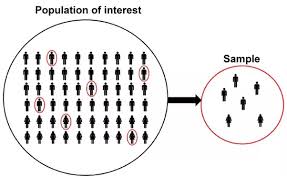Zero Defect Sampling Plan
Zero Defect Sampling Plan

A statistician can have his head in an oven and his feet in ice, and he will say that on the average he feels fine! Anonymous
We always want the best in life and seek only the good things to happen to us. We never want any up-down in our lives but only a straight line. However, doctors say that when ECG is a straight line, it means that the person is no more! Does it mean that we need to graciously accept all the variations in life as it comes?
Something similar happens in the industry too. The customer always expects products and services to be 100% defect-free but the law of nature does not work this way. When an organization produces a product or delivers a service, there is bound to be some abnormality. In such a scenario, the role of sampling becomes relevant. Sampling helps the organization and customer to decide how many defects are acceptable!
As per clause 8.6.6 (IATF 16949); For attribute data sampling, the acceptance level shall be zero defects.
Let us understand the meaning of keywords.
Attribute data: Data that has a quality characteristic that meets or does not meet the product specification.
Examples:
- Sorting and counting the number of defects in a particular product, and the number of nonconforming pieces.
- In a hospital, attribute data will be ‘the number of patients with a fever’, whereas variables data for the same process might be the ‘measurement of the patient temperature.’
- A company produces ‘painted component’ that may have ‘shade variation.’ To verify the colour shade, one can use a ‘Master shade card’ which is approved by the customer. Visually check every painted component with master shade card by a qualified inspector and classify any painted component which does not match with master shade card and classify them as rejects.
Sampling is a process used in statistical analysis in which a predetermined number of observations are taken from a larger population. The methodology used to sample from a larger population depends on the type of analysis being performed.
Types of Sampling plan
Random
Systematic
Convenience
Cluster
Stratified
Acceptance Quality Level (AQL): It is the maximum %age defective that can be considered satisfactory.
Example: Consider an AQL of 1% on a production run. This percentage means that no more than 1% of the batch can be defective. If a production run is composed of 1,000 products, only 10 products can be defective. If 11 products are defective, the entire batch is rejected and further actions are taken.
The AQL of a product can vary from industry to industry. Safety or legal requirements in an automobile or medical products will have stringent AQLs because defective products are a risk to health and legal requirements.
Therefore, in a normal scenario, the manufacturer is not expected to deliver defect-free goods. The customer needs to control the quality of purchased goods since they do not want too many defects. But what does “too many” mean? This is when the AQL comes into play. Organization and customer have to set the limit between acceptability and refusal in a way that can be agreed upon and measured.
There can be different AQLs for critical, major, and minor defects.
Zero Defect Sampling plan: It is a term coined by Philip Crosby in his book “Absolutes of Quality Management.” It means that whatever will be the sampling plan, even if there is one defective (c), the entire lot will be rejected (c=0). The possible action on the rejected lot could be 100% segregation, reworking, repair, scrap or return to the supplier.
Attaining zero defects is technically not possible. According to the Six Sigma Standard, the definition of zero defects is defined as 3.4 defects per million opportunities (DPMO), allowing for a 1.5 sigma process shift. The zero defects concept is the most stringent metrics and should pragmatically be viewed as a quest for perfection to improve quality in the development or manufacturing process. It pushes the organization to improve quality.
What can be the possible steps for zero-defect:
- Challenge to employees
- Cause identification
- Inspection
- Defect cause removal
- Motivation
How to decide AQL:
- Customer requirement
- Market/customer to whom product/service is being sold
- Risk analysis-Impact of defects/defectives on end-user like brakes, Air Bag, Seat Belt, Exhaust Systems etc.
Challenges when not meeting AQL:
- Internal cost of production increases
- Customer satisfaction and loyalty decreases
- Risk of not meeting legal or safety requirement increases
Possible benefits of Zero-Defect Acceptance level:
- Enhances the concept of ‘doing it right the first time’
- Higher customer satisfaction level
- Improved customer loyalty
- Better Profitability
- Waste and cost reduction
- High employee morale
Possible Challenges:
- Although for attribute data sampling, the acceptance level shall be zero defects, how many organizations follow it and achieve it?
- How often quality inspector understands the meaning of AQL and how sampling criteria is decided?
- When the customer sets a target of 1000 ppm (0.1%) for the quality of the finished goods, does organization set internal AQL at 0.1% or less?
- Considering the above point, how often customer compares their quality target (AQL) with the internal target set by the organization at their incoming, in-process and final inspection?
References:
IATF 16949: 2016
IS 2500
ISO 2859-1
This is the 64th article of this Quality Management series. Every weekend, you will find useful information that will make your Management System journey Productive. Please share it with your colleagues too.
Your genuine feedback and response are extremely valuable. Please suggest topics for the coming weeks.

Recent Comments